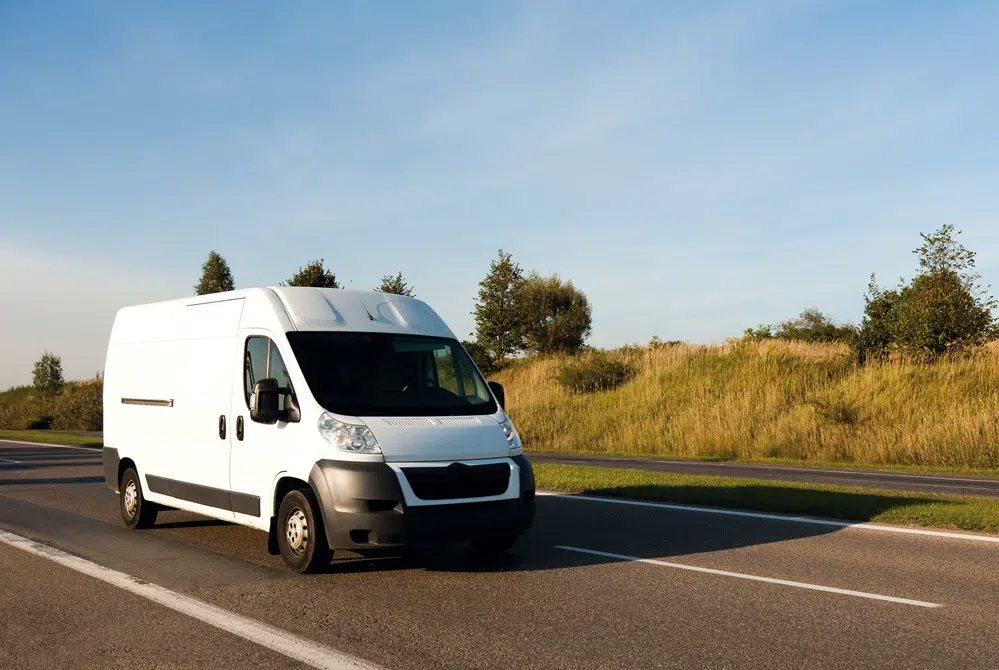Why is van insurance so expensive?

Why is van insurance so expensive? If you find yourself asking this question, you’re not alone. UK customers have seen significant rises in their insurance costs over recent years, and van insurance is no exception.
Here, we’ll walk you through the key reasons for rising van insurance prices (and insurance costs in general) before giving you our top 10 suggestions for lowering your premiums in future.
Let’s go!
Is van insurance more expensive than car insurance?
Yes, insuring a van is usually more expensive than what you would pay to insure a car.
This is because vans (especially big commercial ones) typically have more powerful engines and tend to rack up higher mileage.
So, what is the average cost of van insurance?
According to Consumer Intelligence, van drivers were quoted £1,129 on average for insurance premiums in 2023 — this is up by 15.5% compared to the year before. This average takes into account a range of quotes for different drivers, including figures as high as £3,153 for drivers under 25 and as low as £691 for drivers aged over 50.
Why is van insurance so expensive?
Let’s take a look at some of the reasons why van insurance comes with a higher price tag.
Vans, compared to cars, have specific features that tend to make them more costly to insure.
These include:
More powerful engines: More powerful engines are capable of higher speeds and faster accelerations, which, from an insurer’s point of view, increases the risk of collisions.
Higher mileage: The more you drive your vehicle, the more likely you are to have an accident — statistically speaking. According to the trade body Business Vans, vans clock up an average of 1,300 extra miles per year compared to cars. Unfortunately, this extra time on the road tends to drive up the cost of van insurance premiums.
Higher level insurance groups: As vans are often more expensive, heavier and larger than many cars, they typically fall into higher insurance groups, which drives the cost of insurance up even higher.
Repair costs: Higher mileage and heavier loads can mean that vans cost more to run in the long run. Higher repair costs are also factored into the calculation of a vehicle’s insurance group.
Higher security requirements: Unfortunately, vans tend to be a particular target for thieves: there was a 4.4% increase in UK van thefts between 2019 to 2022, for example. Unsurprisingly, therefore, a van’s insurance group is also influenced by the particular security features it might possess.
But there are also other factors that have driven up vehicle insurance costs across the board. For example:
A boost in the number of cars on the road post-pandemic. You might have noticed that your car insurance premiums decreased during Covid. This was largely due to the fact that there were fewer cars on the road. However, now that the number of vehicles has risen to pre-pandemic levels again, insurance companies are seeing more claims, which has driven up the cost of insurance.
Increased cost of repairs. Soaring energy bills, transport and manufacturing costs have all contributed to the increased cost of repairs in recent years. According to the Association of British Insurers, the average cost of a repair increased by £71.75 in the first quarter of 2023.
No “new customer only” discounts. New rules brought in by the Financial Conduct Authority (FCA) mean that insurance providers can’t charge existing customers more than new customers for the same policy if bought through the same channel. This is good news for those renewing their policy, but it does mean that customers now miss out on the “new customer deals” they may have secured in the past.
Increase in insurance fraud. Sadly, the increased cost of living seems to have driven up cases of insurance fraud in the UK, with The City of London Police’s Insurance Fraud Enforcement Department reporting that opportunistic fraud was up by 61% from March 2022 to April 2023. While some may see this as a victimless crime, insurance fraud drives up insurance premiums for everyone, as insurance companies need to find a way to cover the extra costs.
Inflation. Rising inflation has affected us all — from the cost of the weekly shop to the price tag on a new pair of shoes. But increased inflation has affected insurers too, as replacement vehicles and cars are now much pricier than they were before. This ultimately leads to higher policy prices for customers down the line.
Does my vehicle qualify as a van?
Although it might sound obvious, it’s worth knowing whether your vehicle qualifies as a van for insurance purposes. This is because the category of vehicle you drive can make a big difference to the cost of your motor insurance. But, depending on what you read, definitions can differ slightly.
The most reliable way to check whether your vehicle qualifies as a van is by checking line J (the “vehicle category”) of your V5C log book. You can also check your vehicle’s classification through the DVLA.
How can I lower my van insurance?
Despite rising costs, there are things that you can do to help keep costs down when it comes to van insurance. Here are our top 10 suggestions:
1. Make sure you have public liability insurance. Having public liability insurance in place makes you seem less risky to insurers.
2. Safeguard your no claims. Having a higher level of no claims can lead to a discount when it comes to motor insurance.
3. Name all drivers. Having “any driver” on your policy tends to drive up the cost of your motor insurance quote.
4. Tell the insurer if you’re a member of any trade or professional bodies. Sometimes, insurance brokers offer tradespeople or professionals access to specialist schemes that can lower the price of your premiums.
5. Invest in security devices and don’t store tools in your van overnight. Always keep your insurer up to date with any security devices you’ve had fitted as this can help drive down the cost of your insurance. If you do leave unsecured tools in your van overnight, you may need to think about taking out a separate tools insurance policy.
6. Keep your van in storage. Try and give your insurers as much information as possible as to where you store your van overnight. A locked garage tends to be deemed the lowest-risk location in terms of theft.
7. Get some signage. Did you know that the more identifiable a vehicle is, the less likely it is to be stolen? So if your van is signed or branded, let your insurers know.
8. Reduce your mileage. If your annual mileage has reduced you may be able to get a reduction in the cost of your premiums — so make sure your insurers are in the loop.
9. Pay annually. Although it can be easier to manage your finances by spreading the cost of your insurance premiums, you might find yourself paying less overall if you choose to pay your insurance premium annually.
10. Shop around. Finding the best van insurance can be intimidating! So why not use an experienced insurance broker to help you find the best insurance product for you at the best price?
Read more: 20 ways to reduce your van insurance premiums in 2024
Final thoughts: Why is van insurance so expensive?
Thanks to factors like inflation, an increase in insurance fraud and no “new customer only” discounts, insurance can feel like it’s substantially more expensive than a few years ago. Add to this list the higher price of van insurance — including for business use and repairs — and it’s no wonder van drivers are feeling the pinch.
But the good news is that there are still plenty of things you can do to help lower your van insurance premiums, from investing in security features and overnight storage to reducing your mileage.
Speak to the team at Howden, and you could save up to £203 on your van insurance. Get a quote today.
Also read:



